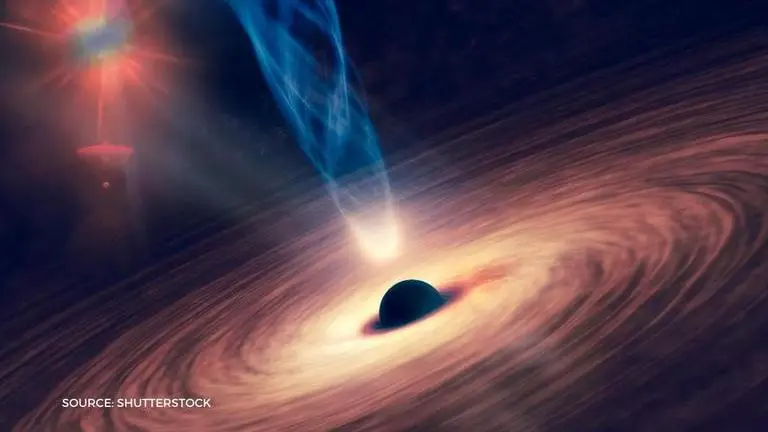Updated 8 February 2021 at 17:52 IST
Black Hole Goes Dark: Find out why this giant black hole stopped emitting X-rays
Scientists have observed one of the brightest X-ray emissions from our Galaxy, the Milky Way, going dark. The emissions in question were created by black hole.
- Science News
- 2 min read

Scientists have observed one of the brightest X-ray emissions from our Galaxy, the Milky Way, going dark. According to space.com, the emissions in question were created by a black hole. Nobody is sure why this happened. Read on to know the current theories on this strange development.
This X-ray of light emitted by a large black hole lives in GRS 1915+105, a star system (a star system is like a solar system) 36,000 light-years from Earth. This star system is unique because it contains a normal star and also the second heaviest known black hole in the Milky Way galaxy. The black hole has approximately 10-18 times the mass of our Sun and is only second to Sagittarius A, the supermassive black hole at the heart of the Milky Way.
The region around this black hole shines brightly as it draws energy from the neighbouring star. The energy of the star is constantly sucked into the black hole and particles of energy rub together, forming the black hole's accretion disk. This accretion disk lights up the incoming X-rays as the black hole devours more and more from the star.
Advertisement
Black Hole Goes Dark
Advertisement
However, since July 2018, something surprising started to happen. The light coming from GRS 1915+105 star system began to dim and continued to get dimmer. Nobody has ever seen something like this before. "We suggest that this state should be identified as the 'obscured state,'" the researchers wrote in a new paper published Jan. 1 to the arXiv database, which has not yet been peer-reviewed. What this basically means is - something is possibly blocking out the light from the source to the Earth. Some large celestial body has come between the source and the Earth, blocking out the incoming light.
Scientists have a few working theories on how this might be happening. Black holes near large companion starts can get dimmer as clouds of gas from the star obscure the light coming from the black hole. "In the case of GRS 1915+105, "Balakrishnan told Live Science, "the companion star is low-mass and does not have massive stellar winds that would create the observed obscuring gas." The researchers also said, "there is a lot of gas in some structure that scatters and blocks light coming from the central engine and accretion disk."
Published By : Sakshat Kolhatkar
Published On: 8 February 2021 at 17:52 IST
